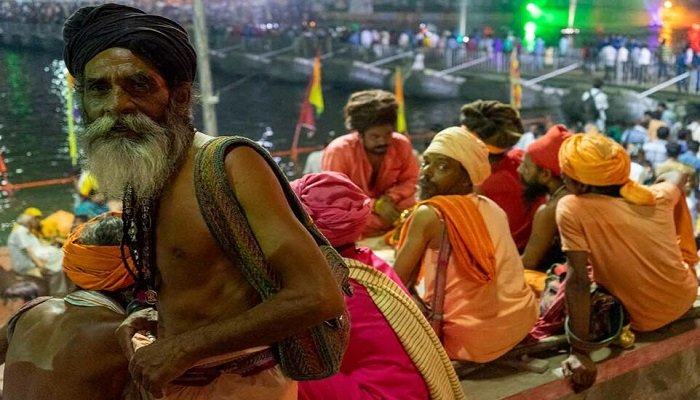By: Dr Priyanka Saurabh
Pilgrimage is a holistic experience that encompasses both a spiritual connection with God and an appreciation for the environment. The natural beauty of trees, plants, valleys, mountains, rivers, and animals adds to the overall magnificence of pilgrimage sites. These elements are manifestations of the environment and contribute to the grandeur and serenity of these sacred places. It would be difficult to envision a divine abode in a location devoid of natural beauty, where there are no flowing rivers or streams, no trees or flowers, and no sounds of birds chirping in the morning.
Religious pilgrimage sites have the potential to create cultural and regional links. These sites attract numerous people from various parts of the world, who come together to participate in religious practices and rituals. This convergence provides an opportunity for people from different regions and cultures to interact, and learn about each other’s traditions, beliefs, and ways of life. Additionally, religious pilgrimage sites can help promote regional tourism as visitors explore the surrounding areas, contributing to the local economy and creating job opportunities, especially in the hospitality and tourism sectors.
Furthermore, religious pilgrimage sites serve as a source of inspiration and motivation for individuals. Participants often derive a sense of spiritual satisfaction and communal bonding from these experiences. This fosters unity and solidarity among people from diverse cultures and backgrounds who share common beliefs or values. Overall, religious pilgrimage sites play a significant role in promoting tourism, facilitating intercultural dialogue, and building cultural ties by offering opportunities for spiritual growth and community-building.
India is home to numerous religious pilgrimage sites that attract millions of visitors each year. Varanasi, also known as Kashi, is one of the world’s oldest cities and holds great significance in Hinduism. Situated on the banks of the river Ganga, Varanasi attracts a vast number of pilgrims annually. Haridwar, located in the northern state of Uttarakhand, is another holy city and one of the seven holiest places in Hinduism. It is renowned for its temples and ghats, which are steps leading to the river. Amritsar, in the state of Punjab, houses the Golden Temple, one of the most revered Sikh shrines worldwide. Tirupati, in Andhra Pradesh, is home to the Sri Venkateswara Temple, one of India’s most visited pilgrimage sites. Bodhgaya, a small town in Bihar, is believed to be the place where Gautama Buddha attained enlightenment. Rishikesh, located in Uttarakhand, is famous for its temples, ashrams, and its association with yoga and meditation. Shirdi, situated in Maharashtra, is home to the Shirdi Sai Baba Temple, a major pilgrimage site for Sai Baba devotees. These examples illustrate the diverse pilgrimage sites in India that provide spiritual solace and cultural immersion to visitors from around the world.
Pilgrimage sites often require extensive infrastructure to accommodate the large number of visitors they attract. Governments and private investors can capitalize on this demand by investing in the development of transportation, hospitality, and entertainment facilities in the surrounding areas. These pilgrimage sites can be promoted not only as religious destinations but also as leisure and entertainment spots, generating employment opportunities and boosting the local economy. The convergence of people from different regions and cultures at pilgrimage sites facilitates cultural exchange and collaboration, promoting cultural tourism and regional diversity and cooperation.
Pilgrimage sites are often associated with historical and cultural significance, which can be utilized to promote heritage conservation and attract visitors interested in history and culture. These sites can also serve educational and research purposes, allowing scholars and researchers to study the history, culture, and religion associated with them. Religious tourism has immense potential to foster cultural ties and regional development. Capitalizing on this potential can create opportunities for economic development, cultural exchange, regional cooperation, sustainable tourism, and heritage preservation.
One concerning aspect is the impact of modern development on pilgrimage sites. In the pursuit of profit, there has been a rise in the construction of shops, hotels, and new structures. Previously, there was a tradition of Dharamshalas or Panthshalas, providing basic accommodations. However, now there is a trend towards providing luxurious facilities in five-star hotels, compromising the traditional pilgrim experience. The greed for money has led local priests, businessmen, and even sages and ascetics to alter the appearance of pilgrimage sites. Businessmen are involved in constructing illegal concrete buildings, transforming the natural surroundings into concrete jungles. Priests and ascetics, in the name of religion and ashrams, are often motivated by commercial interests. As a result, the spread of ashrams coincides with illegal encroachments.
Overall, pilgrimage is a profound experience that intertwines spirituality and the environment. Preserving natural values and aligning pilgrimage sites with their natural surroundings and traditional practices is crucial. It is essential to balance the need for development with the preservation of the sacredness and sanctity of these sites. By doing so, pilgrimage sites can continue to provide a harmonious blend of spiritual fulfilment, cultural exchange, and environmental appreciation.







